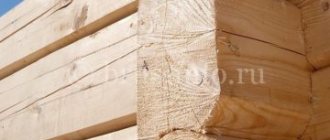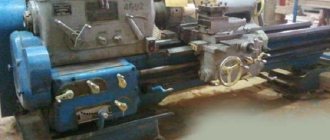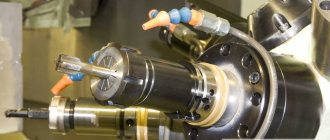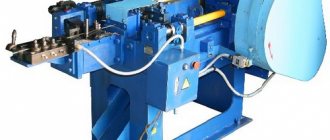Toilet paper is the most common personal hygiene item. This is a product necessary in the everyday life of every person. It will always be in demand among buyers. Toilet paper production is a business that has good potential. It can be profitable regardless of the territorial location of production.
In its familiar form, this personal hygiene item appeared in the United States only at the end of the 19th century. Paper punching was introduced in Germany in 1928. In the USSR, the first production facility opened in 1968 in the Leningrad region and is still operating. At first, the demand for paper innovation among Soviet citizens was very modest. After an advertising campaign, advertisements were played before the film screening, sales began to grow rapidly.
We are researching production technology. Let's look at the equipment needed for this. We will calculate production costs and payback periods.
Equipment for the production of toilet paper
First, let's decide on the equipment necessary for the production of toilet paper. Its variety can increase depending on the range of products you intend to produce. We’ll look at the units you can’t do without.
- Paper making plant. Responsible for preparing raw materials and forming paper pulp.
- Roll cutting device. Some models of this device allow you to adjust the size of the workpiece.
- Unwinding and reeling installation. The paper becomes soft and durable due to the mechanical action of the machine. The paper becomes multilayered after soldering several layers.
- Packaging line. Paper labels or polyethylene are used.
The production process requires high-quality equipment. It is important to find a good supplier and provide for the possibility of regular maintenance. This is the key to the health and longevity of your business. Purchasing used units increases the risk of production interruption, which leads to unexpected costs.
Main characteristics of the mini-plant
If we consider the option of a full production cycle with the stage of recycling waste paper, then such a complex will consist of the following components:
- equipment for the preparation of paper raw materials: Schematic view of lines for the production of toilet paper; pulper mechanism;
- pumps for pumping water;
- pump-mill;
- headbox;
- pressing part;
- heating drum;
- drying conveyor;
- bobbin rolling machine;
What is toilet paper made from?
Let's now figure out what toilet paper is made from. It’s even hard to imagine that in ancient times the “toilet” was made of cotton. The main raw material for production was old clothing. Nowadays, the most common material is waste paper. This is a secondary raw material, which is divided into different grades, depending on the primary material being processed. The low cost of waste paper and the ease of its processing make it possible to obtain an inexpensive product.
The benefits of producing toilet paper from waste paper are that it is cheap, which means there are no problems with sales. There is an opportunity to gain support from the government and environmentalists through the recycling process. The theme of eco-products can be a good marketing proposition.
Cellulose is the most common material for the production of expensive toilet paper. They produce both classic white and colored paper. Cellulose is supplied in rolls of 1-2 meters. The third raw material option is a combination of waste paper and cellulose.
If you plan to produce paper on cardboard cores, the cost of their production will be added, or you can order ready-made ones. Packaging material: polyethylene, paper.
Technical characteristics of some production lines
Finished production lines are divided into two types according to the technological process:
- equipment for production from finished raw materials is the most affordable and simplest option;
- mini-plant for recycling waste paper - includes a set of mechanisms for preparing paper raw materials. This option is more complex, but includes all stages of the production process, and significantly reduces the cost of production.
In Russia you can find equipment not only imported, but also domestically produced, new and used.
Rewinding machine YD-E
For example, the automated complex ALBP-1 (NIKA, Russia) is designed for the production of toilet paper from waste paper. Characteristics:
Automatic line ALPB-1 LLC "NIKA"
- productivity – up to 4 tons per shift;
- power – 20 kW;
- required power supply – 380 V;
- required premises – 200 m2;
- cost – 8,000,000 rubles.
A more budget-friendly version of a complex for the production of toilet paper, but without a line for recycling waste paper, is the ZS-E-1380 model. Characteristics:
- productivity, logs per minute – 6 pcs.;
- power – 5.5 kW; Rewinding machine ZS-E-1380
- dimensions: length – 5050 mm;
- width – 2600 mm;
- height – 1800mm;
Electric mini-factory for the production of toilet paper from recycled materials from Russia, Omsk.
Omsk Paper Mill
Specifications:
- output – up to 1000 kg per shift;
- power – 160 kW/h;
- service – 4 people;
- required production area – 150 m2, ceiling height – 4 m;
- cost – 1,900,000 rubles.
Toilet paper production technology
There are two types of production process.
- The whole production cycle. The input is recyclables, the output is finished products.
- Shortened production cycle. At the entrance there is cellulose in rolls. It is rewound, cut and packaged.
The cost of finished products will be lower during the entire production cycle. This is due to the low cost of waste paper. However, additional costs will be required for equipment and the supply of recyclable materials.
Let's take a closer look at the stages of the entire production cycle.
- Preparation of recyclable materials. The material goes through a purification stage, is crushed and mixed with water. The resulting mass is sent for additional purification.
- Washing of raw materials. The mixture of paper and water enters the tank for further repeated washing. Here the final properties, qualities and, accordingly, the price of the product are laid down.
- Grinding After the washing stage, water is again added to the composition. The grinding process occurs until a thick, homogeneous mass is formed.
- Finalizing the mixture. The concentration of the paper component in the mixture is adjusted to the required parameters.
- Formation of roll blanks. Here, excess moisture is removed from the mixture and it is fed into the dryer. The resulting paper is cut, rolls are formed and cut.
- Unwinding. The blank reels are transferred to the unwinding unit. Here they are wound into rolls of the required size, and the paper is also perforated or embossed. The surface is leveled and the paper is given a given density. At the same time, the edges of the roll are glued, which prevents it from unwinding.
- Slicing. The resulting roll blanks are cut, and we obtain rolls of finished toilet paper.
- Package. There is a different algorithm for different types of products. The rolls are covered with a paper label, or several rolls are wrapped in polyethylene.
Purchase of raw materials
To work with the equipment considered, which processes waste paper, you will need recyclable materials of different brands. Among them may be:
- cellulose paper without printing or ruling;
- lined paper;
- book and magazine paper;
- newspapers and cardboard.
All these are grades of waste paper from MS-1 to MS-10, with the exception of MS-4, MS-5 and MS-6.
Table of waste paper grades
Additionally, mesh and cloth for working with paper, paper glue and cardboard for making sleeves are purchased, if such are required. You can also purchase ready-made bushings.
Business registration
Business registration includes the following steps:
- Registration of legal address . We select a suitable non-residential premises that is registered with the municipal authorities and has an address.
- Renting a building or purchasing it.
- The registration procedure itself. There are two possible options here. Individual entrepreneurship (for small production). Limited Liability Company (for larger-scale production).
In addition, permits from the SES and fire safety supervision are required. Permission from Rostekhnadzor will also be required.
Financial calculations
Let's draw up a rough business plan for the production of toilet paper. Let's determine the main expense items. We will calculate profits and payback periods.
How much money do you need to invest to organize production?
- 2 million rubles — approximate cost of equipment.
- 200,000 rub. — re-equipment of the production workshop.
- 150,000 rub. — obtaining licenses, preparing documentation.
Let's calculate the costs for 1 month of production.
- 75000 rub. - rental of premises.
- 600,000 rub. — the cost of raw materials for the production of toilet paper.
- 20,000 rub. - public utilities.
- 80,000 rub. - wages for workers (4 people).
- 30,000 rub. — purchase of additional equipment.
- 60,000 rub. — transportation of goods.
- 10,000 rub. - Unexpected expenses.
Total:
- Costs for purchasing equipment and setting up the production cycle - 2 million 350 rubles.
- Costs for 1 month. production process - 875 tr.
Payback of a toilet paper business
Now let's calculate the return on business.
From 30 tons of waste paper, we get 272,500 rolls (the weight of one roll is 110 g).
When the price of finished products is 5 rubles. per roll, we get 272500*5 = 1 million 362 tr.
Taking into account production costs, we get 1 million 362 thousand rubles. — 875 t.r. = 487 t.r. profit per month. Based on our calculations, the payback period will be about five months. If we take into account all the associated costs, the profitability of such a business will be about 10-15%. Based on these data, the real payback period is 1 year.
How to choose the right room, what are the requirements?
Choose a location away from residential areas. Please note the requirements of the sanitary service:
- total area - at least 150 square meters;
- height - from 4 m;
- water supply - with a supply of 3 cubic meters per day;
- sewerage;
- ventilation system;
- heating;
- three-phase electrical wiring, power supply - 300 kW.
Zone the room. Equip a warehouse for finished products and a raw materials warehouse. Designate a staff room and a place where you will store equipment.
Russian toilet paper market and sales
In our country, the production of essential paper is widespread and is regulated by GOST “R52354-2005”. The times of scarcity of this product are over, now it is available to everyone. The Russian market for personal care products is developing rapidly. The growth is 7-9% per year, the growth trend continues.
Competition in the production of paper and hygiene products is quite high. Currently, there are about ten large companies, and a huge number of small ones. The population's demand is gradually shifting towards the consumption of higher quality and more expensive products, so the fate of many small producers of low-quality goods is sealed.
Sales are focused mainly on large wholesale buyers. This gives an advantage over small business owners. Without much effort, you can establish contacts with the owners of wholesale stores and sell your products through them.
First, it is important to create your brand. It must be recognizable and in demand by the buyer. Design the packaging, come up with a logo. Don’t forget to actively use the Internet to promote your product. Internet mailings and publication of product advertisements in all available ways work effectively.
Increased production implies an increase in the range of products. Therefore, it is very important to monitor the needs of customers.
There is an increasing demand among consumers for eco-friendly products. If you implement technologies in your production that will help preserve the environment, this will attract more interest in your products.
Implementation
In turn, the topic has already been touched upon earlier. Implementation is a fairly important and well-thought-out business move, on which your benefit will depend. It’s not enough to just produce toilet paper—the process of making it is also considered an art.
At the same time, the bridgehead prepared for implementation must be clearly established, which will avoid difficulties with transportation and storage. There shouldn't be any difficulties. The product was, is and will be in demand, and therefore is needed by everyone.
Products of this kind are not taxed and are not included in the excise tax category, thus, sales are not limited in any way and can be sold in any quantity.










